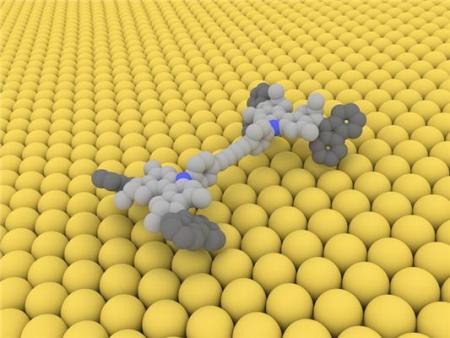Researchers from Empa and their Dutch co-workers have together developed a light-weight nano drive car, which is noiseless, emission-free and comprises a single molecule. It moves around on four wheels, which are powered by electricity, and can travel along a straight line on a copper surface.
 Measuring approximately 4x2 nm the molecular car is forging ahead on a copper surface on four electrically driven wheels
Measuring approximately 4x2 nm the molecular car is forging ahead on a copper surface on four electrically driven wheels
Cells have proteins such as kinesin and actin, which are known as motor proteins as they help in transport within cells. They glide across other proteins burning ATP, the energy currency of life. Researchers at the University of Groningen and Empa have assembled four units of rotating motors to synthesise a complex molecule, which will function as wheels capable of controlled movement along a straight line.
Scientists sublimated the nano car onto a copper surface and positioned an STM tip over the molecule leaving a gap. A 500mV voltage applied using the STM, triggers tunneling of electrons across the molecule, which leads to reversible changes such as cis-trans isomerisation of double bonds in the structure of the four motor units. These changes make the side groups slide against each other, which in turn causes the wheels to rotate. When all the four wheels rotate simultaneously, the nano car theoretically moves forward. After 10 electrical stimulations, the nano car had moved 6 nm in a straight path.
The researchers found that the molecule can sit on the copper surface in two orientations. The right one will have all four wheels turning in one direction and the wrong one will have the front wheels turning backwards and rear ones turning forwards, which prevents movement of the car upon electrical stimulation.
The scientists ultimately demonstrated that molecules can convert external electrical energy to targeted motion. A major disadvantage of this 4x2 nm car is that it needs refuelling at each half revolution of the wheels. Also, the molecular design restricts movement of the wheels to only one direction. The researchers are next planning to develop UV laser-driven molecules.
Source: http://www.empa.ch